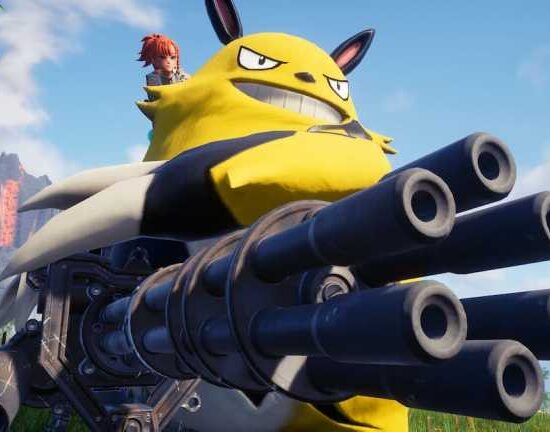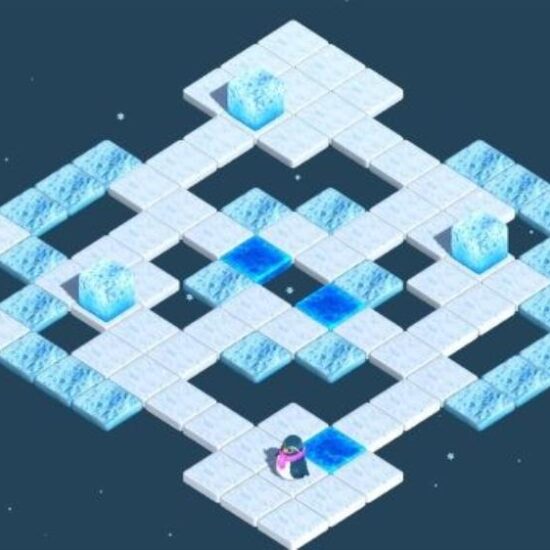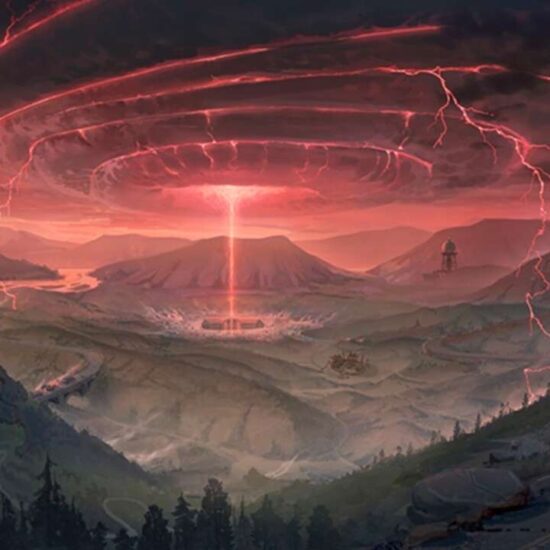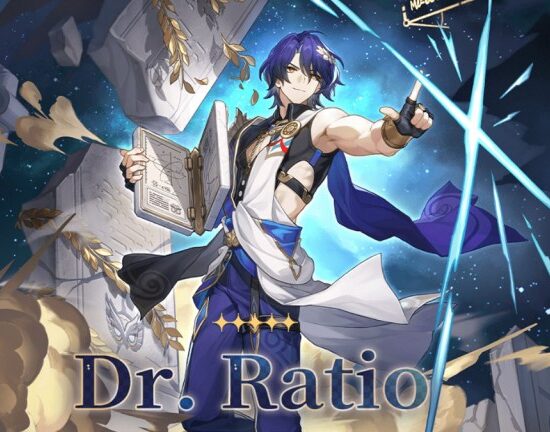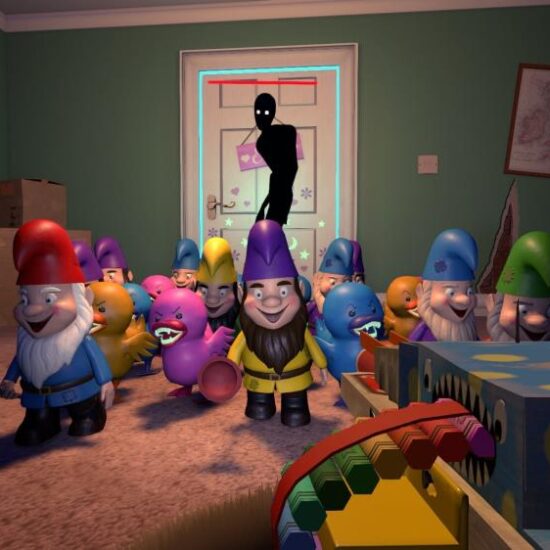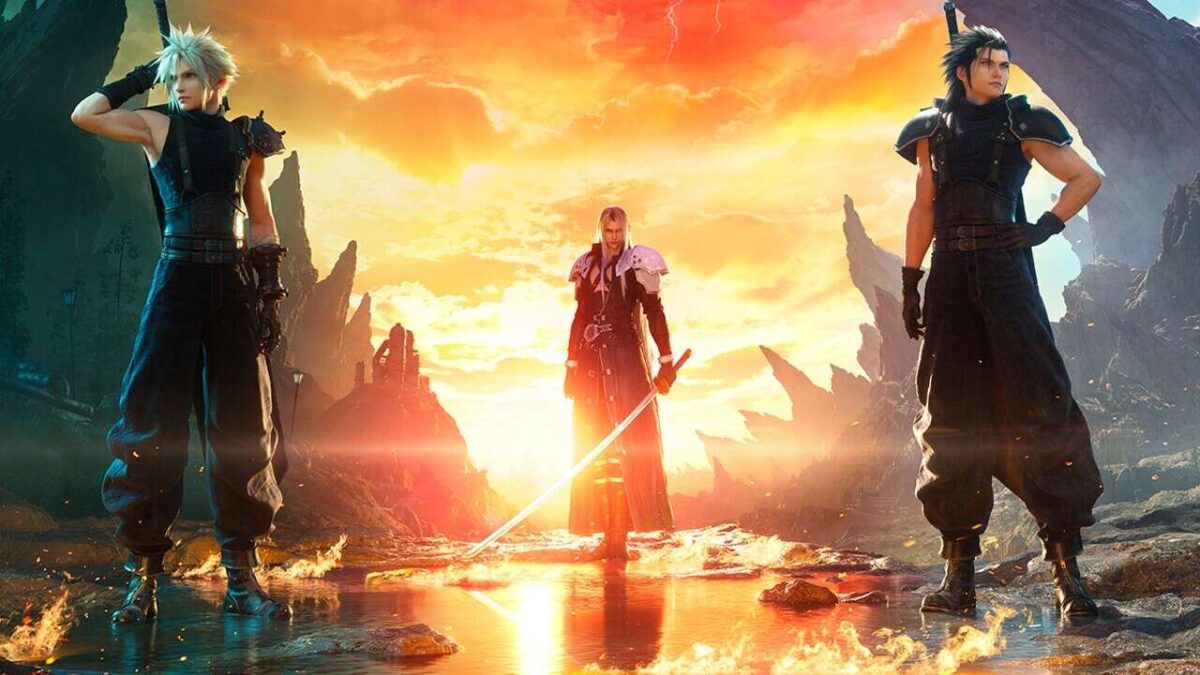
In 2020, Square Enix managed to pull off what many thought impossible by remaking Final Fantasy 7 and delivering a game that reimagined the beloved role-playing classic with modern day gameplay. With gorgeous visuals and an exciting hybrid combat system, Final Fantasy 7 Remake proved to be a huge success. The remake focused on only a small part of the original 1997 release, opting to forgo an epic adventure for a more focused character-driven action-RPG. But we all knew that, inevitably, the story of Cloud, Tifa, Barrett, and Aerith would need to break out of the confines of Midgar and venture beyond, and with that Square Enix would need to address narrative moments that have become so iconic within the culture of video games that even people that haven’t played Final Fantasy 7 have an understanding of their impact. Where Final Fantasy 7 Remake narrowed its focus, its follow-up–and the second in a trilogy of games, that will tell the complete Final Fantasy 7 story–Rebirth, necessitates much greater ambition.
The end of Remake indicates that the developers are choosing to both honor the original FF7 but also establish this trilogy as its own unique experience. After hours of hinting at it, in the closing moments of Final Fantasy 7 Remake, Square Enix made the first move in its ambitious narrative gambit by introducing the idea of a divergent timeline and multiverses, where both what has come before can exist but also the characters can forge a new future. It was a controversial move, but one that, from a narrative perspective, means that longtime fans and the general gaming community don’t have as comfortable a grip on how things are going to play out as they thought. After playing through about an hour of Final Fantasy 7 Rebirth, I can’t say I have any clearer understanding of where things are going and, I suspect, Square Enix will endeavor to keep it that way up until release, when players can experience it firsthand.
My hands-on was split into two distinct slices, with the first being “The Fated Mt. Nibel Mission” and the second being “The Open Wilds of Junon.” As the naming alludes to, and fans will know, the former of these is a pivotal moment in the story of Final Fantasy 7–you’d imagine it would be a perfect opportunity to get to grips with where Square Enix might be taking the story. But, actually, it was more of a showcase of how the gameplay has evolved. The latter, seemingly less important at first blush, offered a glimpse at some small changes that have been made to the way Final Fantasy 7’s story plays out, emphasis on the small.
The Fated Mt. Nibel Mission takes players back five years, when Cloud and Sephiroth are dispatched to Nibelheim as part of a survey team. The duo, along with another soldier serving as backup, are tasked with investigating the malfunctioning Nibel Mako Reactor. But to do so, they first need to climb Mt. Nibel, a task for which they employ a young Tifa as a tour guide. As previously mentioned, outside of this setup and some conversations that add flavor to the relationship between the characters and the world, there’s no further story development. Nevertheless, it was still enjoyable seeing the world colored in with familiar shades again. The demo opened with Cloud, Tifa, and Sephiroth admiring the beauty of a mako spring; a hardened structure of natural energy that looks more like a delicate crystalline flower than a resource to be mined. And yet, that is what Shinra, the corporation behind much of the corruption in the world, uses it for. While Cloud admires the mako, Tifa points out that springs like the one before them could be a thing of the past if people continue to use mako to power their homes. It’s a reminder of the value that Tifa holds, the awareness she has of what is happening to the planet around her, and how she could go from a soft-spoken advocate for the health of the planet to one that joins a group labeled as an eco-terrorist insurgency.
Cloud, meanwhile, serves as a contrast to Tifa, asking her what she’s on about and suggesting that mako will never run out. This is a Cloud that is more effusive than who we played as in Remake, making grand proclamations in his naiveté. It’s a far cry from the stoic, emotionally closed off mercenary we saw in the last game–and for good reason, but I’ll leave you to discover why. For his part, Sephiroth provides an in-depth explanation of how mako is utilized to cast magic spells. Thus far, we’ve had very limited exposure to this legendary villain, as he showed up in Remake in sparing moments to plague Cloud with visions and memories of his past, while having an ominous I’m-going-to-do-some-real-nasty-things-soon vibe. In this moment, though, a younger Sephiroth shows that he has a much deeper connection to the planet and an understanding of the resources derived from it than anyone else, which will play into the story much later. He also hints at a certain scientist from the Research & Development department that might be a bit of a weirdo compared to his predecessor. From here, outside of some ship-baiting interactions between Cloud and Sephiroth, the narrative takes a backseat to make way for gameplay.
Darkness in the caverns of Mt. Nibel only give way to light around Materia formations, which draw the eye with their bright, glowing blue hue and spores of energy floating off them. They provided an eye-catching breadcrumb trail to guide the party towards higher ground and, along the way, stumble upon materia to equip. Of course, nestled in the darkness were also a variety of enemies, the first of which I encountered was Insectoid Chimera. The foundation of Final Fantasy 7 Rebirth’s combat is what was established in Remake; a hybrid system that allows players to take direct control of party members and manually dish out attacks and cast spells, while also bring up those familiar Final Fantasy command menus to tell others in the crew what to do. This time around, however, there are some tweaks and additions to make the sub-systems housed under this overall approach more engaging for the player as well as to make them coalesce with each other a bit better.
For classic RPG fans, [Synergy Abilities] are an incredibly cool, cinematic version of Chrono Trigger’s Cross Techs and it’s so satisfying to execute one in the heat of battle and watch it unfold.
For example, while fighting as Cloud you can continuously press the square button to do his basic sword slash attack, hit the same button immediately after dodging to execute a ranged attack, or hold it for an aerial combo. However, after landing enough attacks, a special attack can be quickly thrown into the mix–think of it as a kind of enhanced basic attack. At its simplest, it’s a nice way to build a rhythm to the standard attack mashing portion of any fight, but with closer attention paid it can become very useful in combo strategies. Cloud also has the Punisher Mode from Remake, so there are stance-based options again too. The layer on top of that is the ATB gauge, which will gradually fill but can be accelerated by landing standard attacks. Once a bar is accrued, the command menu can be used to activate abilities like Braver, Triple Slash, and Firebolt Blade, which have offensive applications, or Assess, which is used for information gathering. ATB gauges are also spent on casting spells or popping items.
This basic framework plays out the same for every other character, whether they’re up-close brawlers like Tifa, ranged like Barrett, or healers like Aerith. In this demo, we got to take control of Sephiroth, who delivers brutal slices of his Masamune blade and, similarly, will be able to perform a branching finisher by pressing triangle when enough hits in a combo string are landed. The upside to this approach, along with the aforementioned improvement to the engagement of basic attacks, is that using these branching attacks fills up the limit gauge quicker, further enhancing that sense of combat flow. In his Retaliation stance, Sephiroth switches from offense to defense, and can parry incoming attacks quickly.
Things got a little more interesting with the introduction of Synergy Skills, which put a new twist on how guarding works in Rebirth. While holding down R1 to guard, an additional set of skills become available and can be executed without expending ATB charges. These skills differ depending on who is actively being controlled and can have a variety of applications. While in control of Cloud and blocking the swooping attack of the airborne Zu enemy, I called upon the aid of Sephiroth, who imbued my Buster Sword with a purple energy that completely engulfed it, making it a giant magical blade that I could charge briefly and then swing around me as I leaped into the air and twisted my body to then bring it crashing down–a little technique called Voidshatter. Another ability, Counterfire, enabled Cloud and Sephiroth to team up and nullify projectiles. I found this to be a particularly satisfying way to develop more of a synergy between the two that, when combined with a larger party, is bound to encourage deeper investment in each character, while also giving players another good reason to switch between them. It’s a very smart tweak that I think could pay off nicely.
Building atop that, with similar goals and effects, are Synergy Abilities, which you can think of as team-up Limit Breaks. While Limit Breaks unlock an individual character’s special ability, often which is more devastating than anything else in their arsenal, Synergy Abilities are a step up as they combine two characters to execute a similarly powerful move. In the battle against a giant insect-like creature called the Materia Guardian, I was able to test out Double Helix, a Synergy Ability that has Cloud and Sephiroth both leap into the air, side-by-side, with Sephiroth launching ranged attacks by using his sword to slice through the air, and then both of them launching themselves at the enemy so Cloud can unleash a crushing, downward spin slash that transitions into a flurry of acrobatic attacks from both characters and ends with a combined cross slash. For classic RPG fans, imagine an incredibly cool, cinematic version of Chrono Trigger’s Cross Techs and that’s essentially what you have here, and it’s so satisfying to execute in the heat of battle and watch unfold. The battle concluded with Sephiroth giving Cloud a nod of approval for his performance–the two clearly developing a close bond.
The other major component of this area of the demo was the way movement worked. Now the game specifically calls out “Terrain Actions,” which is a fancy way of denoting the ability to interact with the environment in different ways. While moving around Mt. Nibel specifically, it meant using some basic traversal to hop up and down elevated terrain, climb up walls to reach different areas, and shimmy along ledges. It’s simple stuff, but it speaks to a more open design with some small branches, where Remake remained fairly linear.
The second part of the demo, The Open Wilds of Junon, was presented as a taste of the open-world elements of Rebirth, though at this stage calling it open-world might be misleading based on what we played. Cloud, Tifa, Aerith, Barrett, and Red XIII are tracking a group of mysterious robed figures through the Mythril Mine–you might remember these folks as the strange new element added to Remake. This mission leads them to Junon, described as an “expansive” region where players can “enjoy traversing the area atop the mountain chocobo Beller as you look into sightings of hostile creatures in the area.” While this certainly was an open space to explore and engage in various activities, it wasn’t expansive to the degree that the phrase “open-world” suggests. Square Enix indicated that this demo featured a more contained version of what will be in the final game, owing to the fact that the demo was a playable build for Tokyo Game Show and so it needed to be somewhat limited. While this is very fair, it also means that I wasn’t able to get a good sense of just how open this supposed open-world is; whether it’s a big play area for players to adventure in that is seamlessly connected to the rest of the world, or whether it’s one of many hubs that provide a degree of freedom and space to roam. Given the detail of the world and what you can do in it, as well as taking into mind how the devs approached Remake, I’m inclined to think it’s the latter.
But that’s also very exciting, because it means there is once again the opportunity to go for depth in the absence of breadth, and some of that was on show. With the gang together, we began exploring the wilds of Junon while riding a chocobo. These steeds serve more than just a travel function this time, as they can now be used to sniff out treasure. By hitting R1, I was able to call my chocobo to my side and dash around the environment. When the chocobo could smell treasure nearby, a question mark would pop up over its head, at which point I needed to follow the scent to the prize. It’s worth pointing out that everyone in my party hopped on their own chocobo… including Red XIII. I mention that because there was something highly amusing about seeing the wolf-like beast riding another animal and looking a bit awkward while doing so. It was both funny and endearing.
The presence of an entire party also means that new ways to manage them have been added. It’s now possible to set up what are effectively party loadouts, so you can create different combinations of teams of three and then assign them a slot, with a max of three combinations. Then, while out in the world–but not in battle–you can quickly switch between your loadouts and the characters will reposition themselves to either be on the front or backline, according to your desired setup. It’s an elegant way of managing the makeup of a party without becoming too bogged down in hopping in and out of menus.
Gallery
This area is where I got my first taste of fighting as Red XIII, so he featured prominently in my parties. Red mixes quick strikes with the ability to buff himself and improve his power and speed. Basic attacks swipe at enemies with his claws and he can also unleash a whirling slash attack . Blocking fills Red’s Vengeance Gauge, which can be spent to enter Vengeance Mode to up his attributes. The gauge drains once activated, but can be done so at any point, so it’s best to use once filled completely but can also be busted out early if needed in a pinch. Most of my time in the wilds of Junon was spent doing hunts, which involved tracking down beasts and defeating them. Cloud and the gang now have some sort of talking AI-companion that speaks to them through a device and offers information of the wildlife–it very much reminded me of a Pokedex. It filled me in on a rare elphaduk variant that I was about to tussle with, letting me know that it’s a beast of burden that is usually of a docile disposition, making it ideal for agriculture, transportation and–in some cases–warfare. These hunts were pretty standard search and destroy missions, but they were given an extra layer of challenges by sub objectives like defeating them within a time limit, staggering or pressuring them, or interrupting a specific attack. It’s hard to say whether these hunts will have much gameplay longevity as the rewards aren’t totally clear, but, at the very least, the fundamental combat was thrilling enough to push me to take them on instead of rushing by.
Eventually, I made it to the local village, where the gang was welcomed, despite the fact that there are wanted posters circulating around calling for their arrest. This area of Junon felt closer to one of the locations from Remake, with citizens wandering around living their daily lives, but all under the overwhelming presence of Shinra and its exploitation of the resources of the planet. While I won’t explain exactly what happens, this is also where a certain five finger discount prone ninja makes an appearance, presumably to join the crew. There’s a really nice little nod to fans with how all this plays out that takes a ridiculous but nostalgic element of the original Final Fantasy 7 and reworks it to better execute on the modernized vision. And that is what Rebirth feels like at this stage. It probably doesn’t come as a surprise, or may even not sound super-exciting for people that are expecting radical changes, but as a fan of both the original and Remake, that’s exactly what I want out of Rebirth.
In Rebirth, Square Enix looks to be taking the foundation of Remake and building on it in ways that, while not revolutionary, are poised to extend what made it such a fantastic modernization of a game that so many adore. The surprises, then, are going to be in seeing the full scope of the open-world and, more importantly, the narrative swings it takes. How those land remains to be seen, but being able to experience it in a few months time is an exciting prospect.
The products discussed here were independently chosen by our editors.
GameSpot may get a share of the revenue if you buy anything featured on our site.









